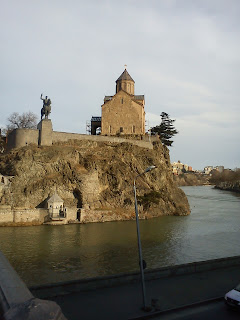Tourism, as volatile as resilient
Tourism is
one of the most volatile among the World Big Industries.
On the A-list
of the world most productive human activities, until January tourism was the
third largest industry, generating 10% of the planet's gross domestic product
(GDP). Remarkably, tourism’ numbers were constantly growing: whereas global GDP
increases on average by 2% per year, tourism has stabilized around 7% of annual
growth in recent years (+4 in 2019).
Then, the
Covid19.
As volatile
as it is, when a crisis of whatever nature erupts in a destination, the tourism
system may temporarily collapse. And the Covid crisis makes no exceptions among
the world destinations, as it hitting 188 countries and the entire global
travel network.
The World
Tourism Organization recently estimated that the overall impact of Covid for
the January-April semester with 100% destination with travel restrictions is of
about 180 million fewer international arrivals and US$195 billion lost in
export revenues from international tourism. (https://webunwto.s3.eu-west-1.amazonaws.com/s3fs-public/2020-06/200622-Barometer-June-EN.pdf).
Plus, to national governments the painful task to evaluate the drop in domestic
tourism.
The picture
is bleak.
The grip of
Covid19 is still squeezing international tourism while in some countries at
domestic level internal mobility is cautiously returning to a
kind-of-normality.
The European
Union pushed for internal trans-border tourism, a brave step which could enable
EU member states to have a very decent summer season, under the circumstances
of an ongoing pandemic.
Because
tourism is as volatile as extremely resilient.
Travels are
resuming in countries struggling to leave behind the peak of their crises. Covid
infections are unevenly scattered around the world, the closures were asynchronous,
and so are the current stages.
Those who can,
feel more than ever the need to evade and are enjoying a renewed sense of
freedom through traveling. But can this season be the same as before? We are
forced to social distancing, and to adopt measures of cautiousness never
experience before, or not at least by the living generations.
Sport tourism
is not an exception, and contact sports are especially challenged.
Most outdoor
sports find themselves in a privileged position.
Outdoor
activities, and even more those practiced in remote, wild or natural, underpopulated
areas, are definitely safer than indoor ones. Destinations are alerted that
this year a differentiation of their tourism offer which would include nature
based-solutions is no longer a choice, but mandatory.
Just to
recall, the One Planet Sustainable Tourism Programme underlines that: “Nature-based solutions have potential to drive
innovation in tourism towards sustainability and, besides mitigating the environmental impacts of tourism activity,
[…] also respond well to the expectations of a growing demand for experiences
in nature.” (See the whole doc.: https://webunwto.s3.eu-west-1.amazonaws.com/s3fs-public/2020-06/one-planet-vision-responsible-recovery-of-the-tourism-sector.pdf)
For those who
are not familiar with the One Planet Sustainable Tourism Programme, it is a
multi-stakeholder partnership led by UNWTO, with the governments of France and
Spain as co-leads and in collaboration with UNEP. The programme’s scope is to
make tourism more sustainable by 2030 through the development and the promotion
of sustainable chains in tourism products and practices.
The floor is
open not just to restore the tourism industry, but to ameliorate it.


Commenti
Posta un commento